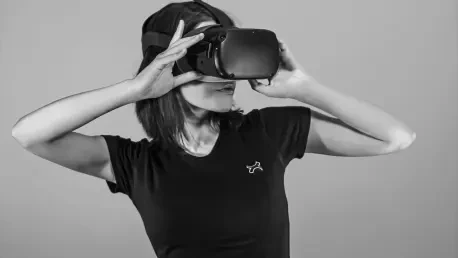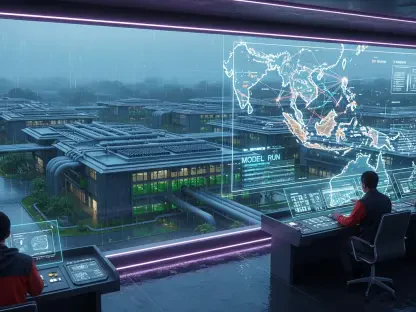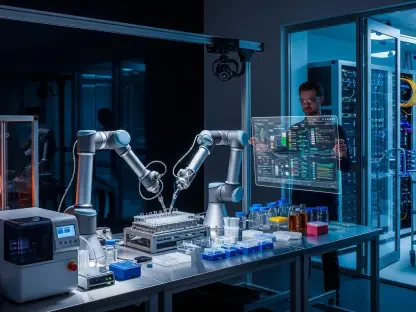In a rapidly evolving tech landscape where mixed reality is poised to redefine how users interact with digital environments, Samsung has taken a bold step forward with its upcoming Galaxy XR headset. This innovative device, designed to blend virtual and augmented reality seamlessly, has sparked significant interest across the industry. A major development in its journey to market is the strategic addition of a new supplier for critical display components, marking a turning point in production scalability. As demand for immersive technologies surges, Samsung’s latest move not only addresses supply chain challenges but also positions the company to rival industry giants in delivering cutting-edge experiences. This advancement signals a deeper commitment to the XR market, reflecting broader trends of integration and innovation that are shaping the future of consumer tech.
Strategic Production Enhancements
Strengthening Supply Chain Resilience
Samsung’s decision to incorporate Samsung Display as a second supplier for the Galaxy XR headset’s OLEDoS (OLED on Silicon) panels represents a calculated effort to bolster production stability. Initially dependent on external partners for micro-display technology, the company has now diversified its sourcing strategy following rigorous reliability testing and certification of in-house capabilities. This shift, which kicked off with mass manufacturing last month and an initial batch order in October, underscores a proactive approach to mitigating risks associated with supply disruptions. By adopting a dual-supply model, Samsung ensures a steadier flow of components, crucial for meeting anticipated global demand. This framework also offers greater flexibility in scaling output for international markets, a vital factor as the headset prepares for its commercial rollout in the coming year. Such a strategy mirrors successful models in the tech sector, where redundancy in sourcing often translates to enhanced operational security.
Driving Cost and Innovation Control
Beyond securing supply, integrating Samsung Display into the production pipeline grants Samsung tighter control over key aspects like pricing and technological advancements for the Galaxy XR headset. This vertical integration facilitates closer collaboration between hardware and display engineering teams, paving the way for optimized performance tailored to mixed reality applications. It also positions the company to potentially reduce costs over time by streamlining development cycles and improving yield rates during manufacturing. Industry observers note that this approach aligns with tactics employed by leading competitors who leverage in-house resources to maintain a competitive edge. As Samsung balances partnerships with external suppliers and internal capabilities, the move hints at a long-term vision of self-reliance in critical component production. This could prove instrumental in accelerating future iterations of XR devices, ensuring they remain at the forefront of innovation while addressing market-driven price sensitivities.
Technological Edge and Market Positioning
Elevating Immersive Experiences with OLEDoS
At the heart of the Galaxy XR headset lies its advanced OLEDoS technology, featuring dual 1.3-inch 4K microdisplays boasting over 4,000 pixels per inch. This high resolution effectively eliminates the distracting “screen-door effect” often seen in lower-quality VR devices, promising users a more seamless and engaging visual experience. By partially producing these displays in-house through Samsung Display, Samsung achieves superior integration, enhancing attributes such as color accuracy, refresh rates, and brightness consistency. These elements are paramount for delivering truly immersive virtual and augmented reality environments that captivate users. The technological leap not only elevates the headset’s performance but also sets a benchmark for quality in the crowded XR space, challenging established players to match or exceed these standards. As a result, Samsung is carving out a distinct niche focused on premium user experiences.
Competing in a Crowded XR Landscape
With the integration of cutting-edge display technology, Samsung is strategically positioning the Galaxy XR headset to compete directly with industry leaders like Apple’s Vision Pro and Meta’s Quest Pro. Analysts highlight that bringing display production partly in-house could shorten product development timelines and enhance cost efficiency, providing a competitive advantage in a market driven by rapid innovation. This move also reflects a broader commitment to building a robust mixed reality ecosystem, encompassing hardware, software, and user engagement. While external partnerships remain integral for the initial production phase, the gradual shift toward internal sourcing suggests a future where Samsung could dominate key aspects of XR technology. As the company prepares for a limited regional release by mid-2026 and a wider global launch later that year, anticipation builds around how these advancements will translate into market share and consumer reception.
Finalizing the Path to Market
Reflecting on Production Milestones Achieved
Looking back, Samsung’s strategic maneuvers to enhance production for the Galaxy XR headset through a dual-supply model stood as a defining moment in its journey. The successful onboarding of Samsung Display as a key supplier, coupled with the commencement of mass manufacturing, addressed critical supply chain vulnerabilities that could have delayed progress. This careful planning ensured that the groundwork for a stable rollout was laid well in advance, demonstrating foresight in navigating the complexities of tech manufacturing. The emphasis on OLEDoS technology further solidified Samsung’s intent to deliver a product that pushed boundaries in visual fidelity. Each step taken during this phase reflected a deliberate effort to balance immediate production demands with a vision for sustained growth in the mixed reality domain, setting a precedent for how strategic supplier integration could shape outcomes.
Paving the Way for Future Success
As attention shifted to the next stages after these production achievements, Samsung focused on final hardware optimizations and securing regional certifications to meet diverse market standards. Plans to unveil additional specifications at major industry events like CES 2026 hinted at opportunities to showcase further innovations in display technology. For stakeholders and consumers alike, staying informed about upcoming announcements regarding pricing and specific launch territories became essential. Meanwhile, the industry watched closely to see how Samsung’s internal supply chain advancements would influence broader trends in vertical integration. The path forward involved not just launching a device but establishing a foundation for future XR models, potentially redefining user expectations. Keeping momentum through continuous refinement and strategic reveals promised to be the key to maintaining competitive relevance in an ever-evolving tech landscape.









